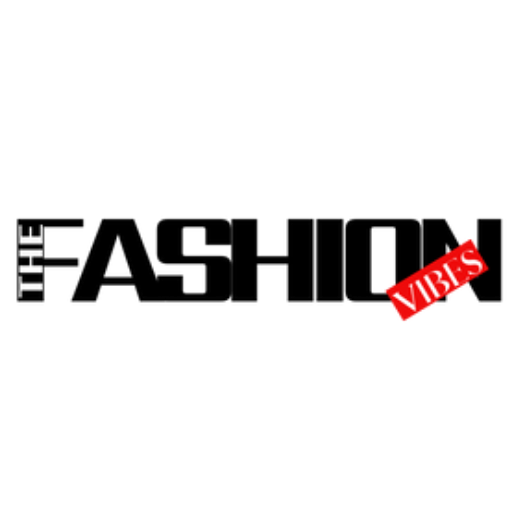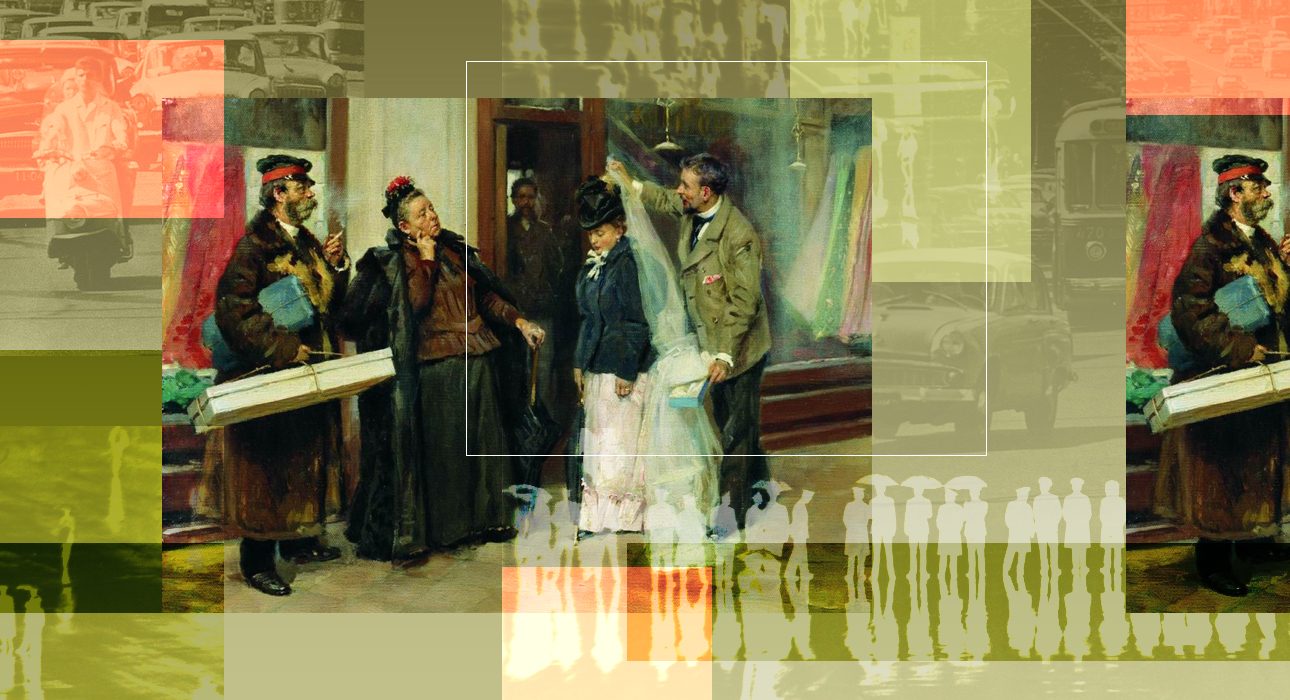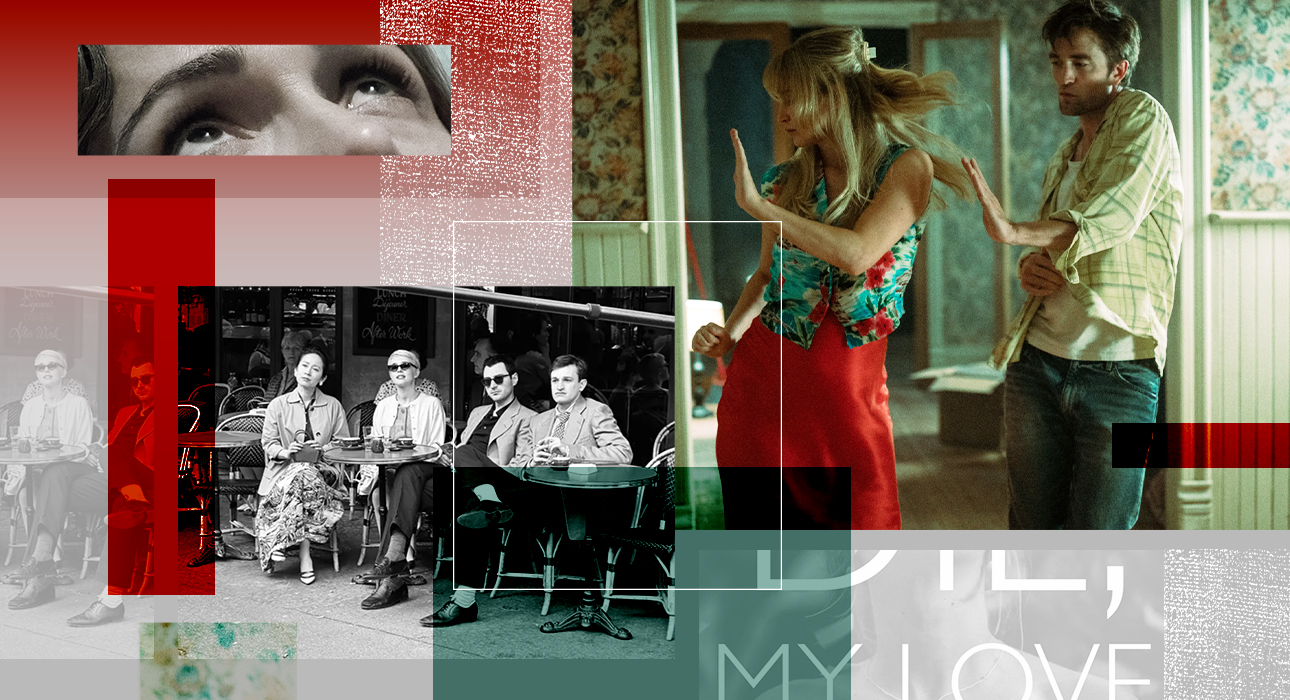The image of Moscow attracts the attention of artists, photographers and other creative people with its grandeur and frenetic energy. The streets, where ancient architectural objects and modern skyscrapers meet, have a special atmosphere that makes the heart beat faster. Many artists have tried to capture the magic of the city.
The group “Bravo” dedicated a song to cobblestone streets, parks and squares. Their composition “This City” became the unsung anthem of the capital. The lyrics of the popular hit say “This city is the best city in the world” and reflect the artists’ admiration for Moscow. Naum Granovsky and Sergey Shakhidzhanyan photographed every corner of the capital and its residents with great love, paying great attention to seemingly imperceptible details. And Vladimir Gilyarovsky described in detail every nook and cranny.
The Fashion Vibes columnists and authors of the Telegram channel Art Soulmate Kristina Seredzinskaya and Yulia Beskorsaya tracked how the image of Moscow changes in the eyes of artists and what inspires them at each stage of its development.
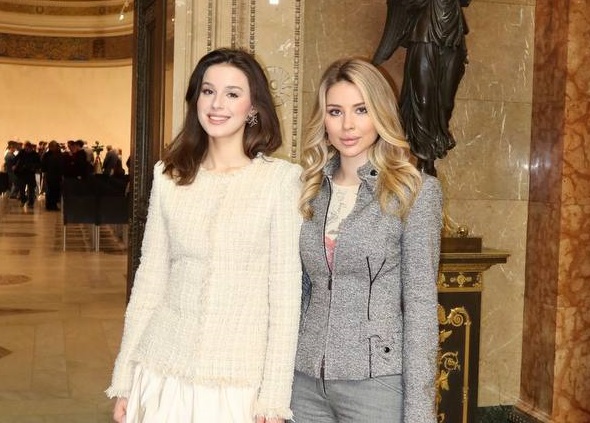
Kristina Seredzinskaya and Yulia Beskorsaya
Moscow Vladimir Gilyarovsky
Vladimir Gilyarovsky is known not only for writing books, including “Moscow and Muscovites”, but also for his journalistic activities. His colleagues nicknamed him “the king of journalists” for his efficiency and ability to obtain specialized information. He took notes on the capital from the late 19th century to the early 20th century. He was forced to change the names of characters and hide his own name so that the censorship would allow the material to be published. Nicknames include: “One of Us”, “Theater Mouse”, “Gilyai” and “Uncle Gilyai”.
Gilyarovsky was not only a professional in his field, but also an inspiration. Thanks to his book, the works of artists Vladimir Makovsky and Mikhail Chemodanov came to light.
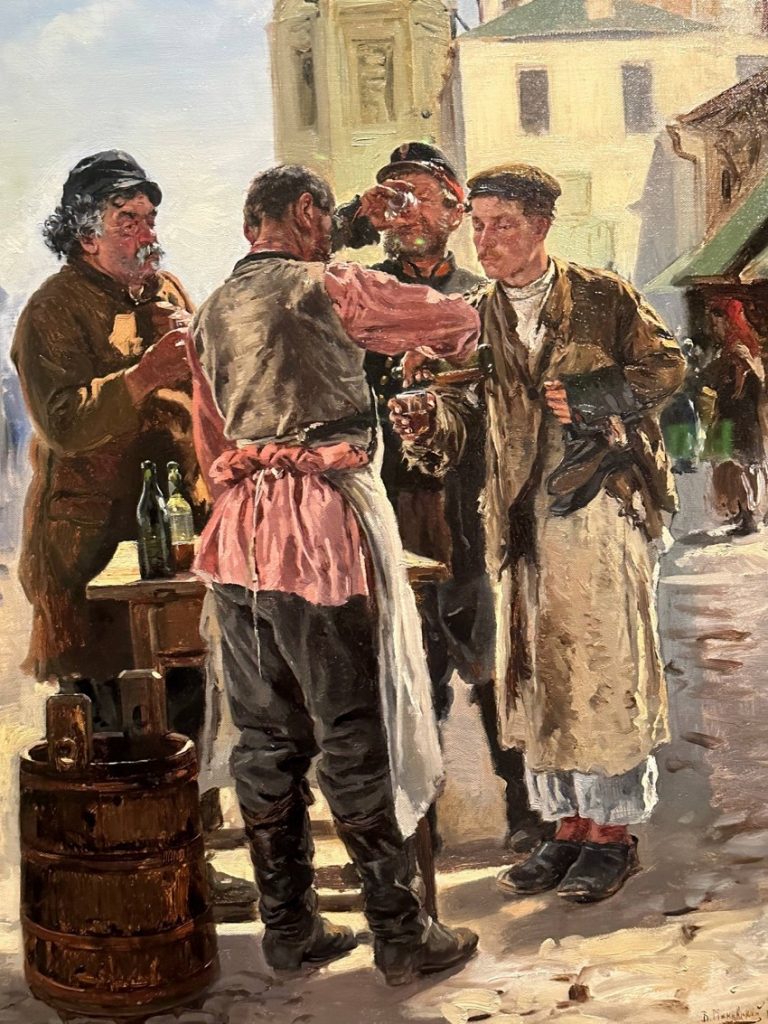
Vladimir Makovsky painted the painting “The Kvass Seller”, which reflects the reality described by Gilyarovsky in his work:
“On the pavement in front of the tents there were pie sellers, pancake sellers and sellers of buckwheat fried in vegetable oil. For a penny per glass, sbiten workers poured hot sbiten, the most popular honey drink at the time, which warmed taxi drivers and workers freezing in cold storage. In the summer months, sbiten makers were replaced by kvas sellers, and the most popular of these was boiled pear kvass. Soaked pears were sold in pyramids on trays and kvass was taken from a bucket in mugs.
Gilyarovsky managed to do what no one else could – to write with great love about the poor and doubtful human life. He sincerely sympathized with the inhabitants of the Olsufevsky castle, who did not leave their homes due to lack of clothes. The slum dwellers also loved “Uncle Gil” for his ability to not hesitate to be with them at the same table.
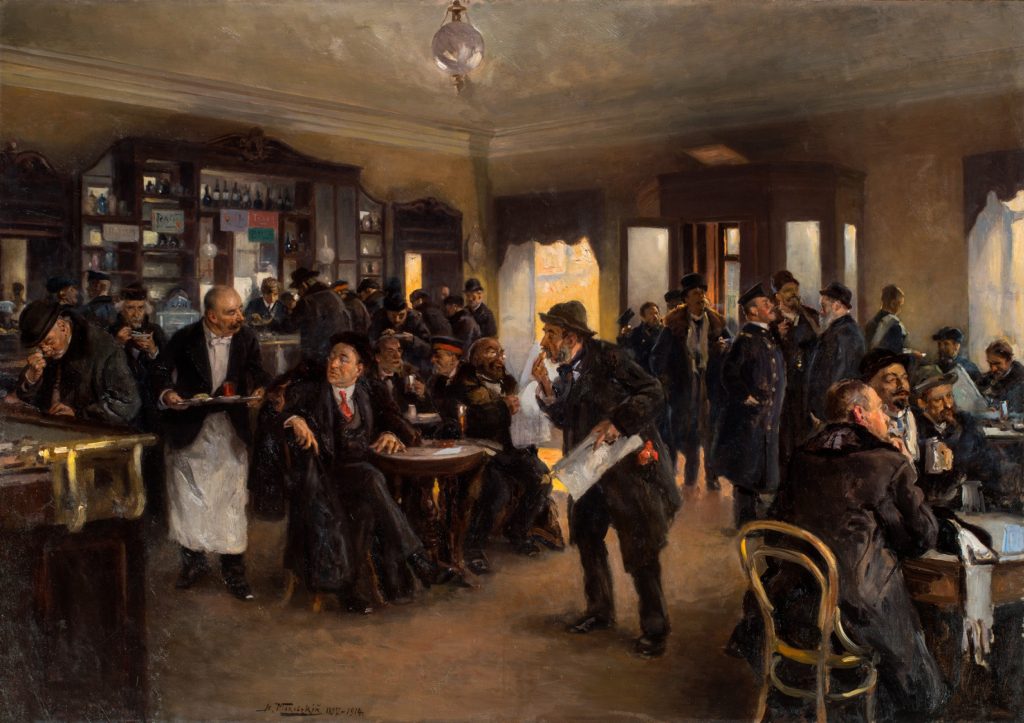
He masterfully described the life of a well-fed merchant. Take a look at the daily tavern sketch, where merchants who like to mock the defenseless sexes are forced to give “tea” to the most knowledgeable among them. Gilyarovsky boldly described the traditions of the “Merchant Club” located on Bolshaya Dmitrovka. In those days, Dmitrovka was considered a completely noble street. The Dolgorukys, Golitsyns and Shcherbatovs lived here. However, gradually the old noble houses began to fall into the hands of wealthy merchants. They removed the family crest from the building and lived there without making the slightest renovation. Noble quality was valued and they were in no hurry to destroy it.
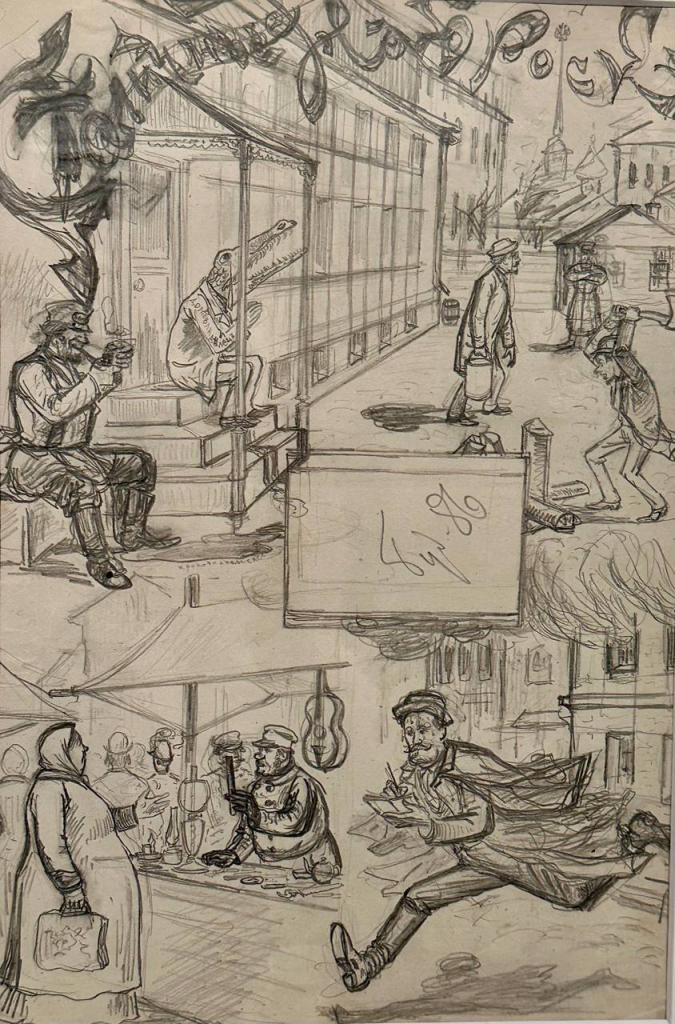
The picture of city life would be absolutely incomplete without Mikhail Chemodanov’s caricatures; It is his works that provide the necessary dynamics, compatible with Vladimir Gilyarovsky’s definition of the city. The artist’s humorous sketches reflect the real life of Moscow with its joys and pains.
Most of the buildings and streets described by Gilyarovsky have long disappeared, no one sells rabbits in Okhotny Ryad, but Moscow is growing and progressing. If you want to feel the atmosphere of old Moscow, we highly recommend you to take the “Walking with Gilyai” walking tour from the Moscow Museum in warm weather.
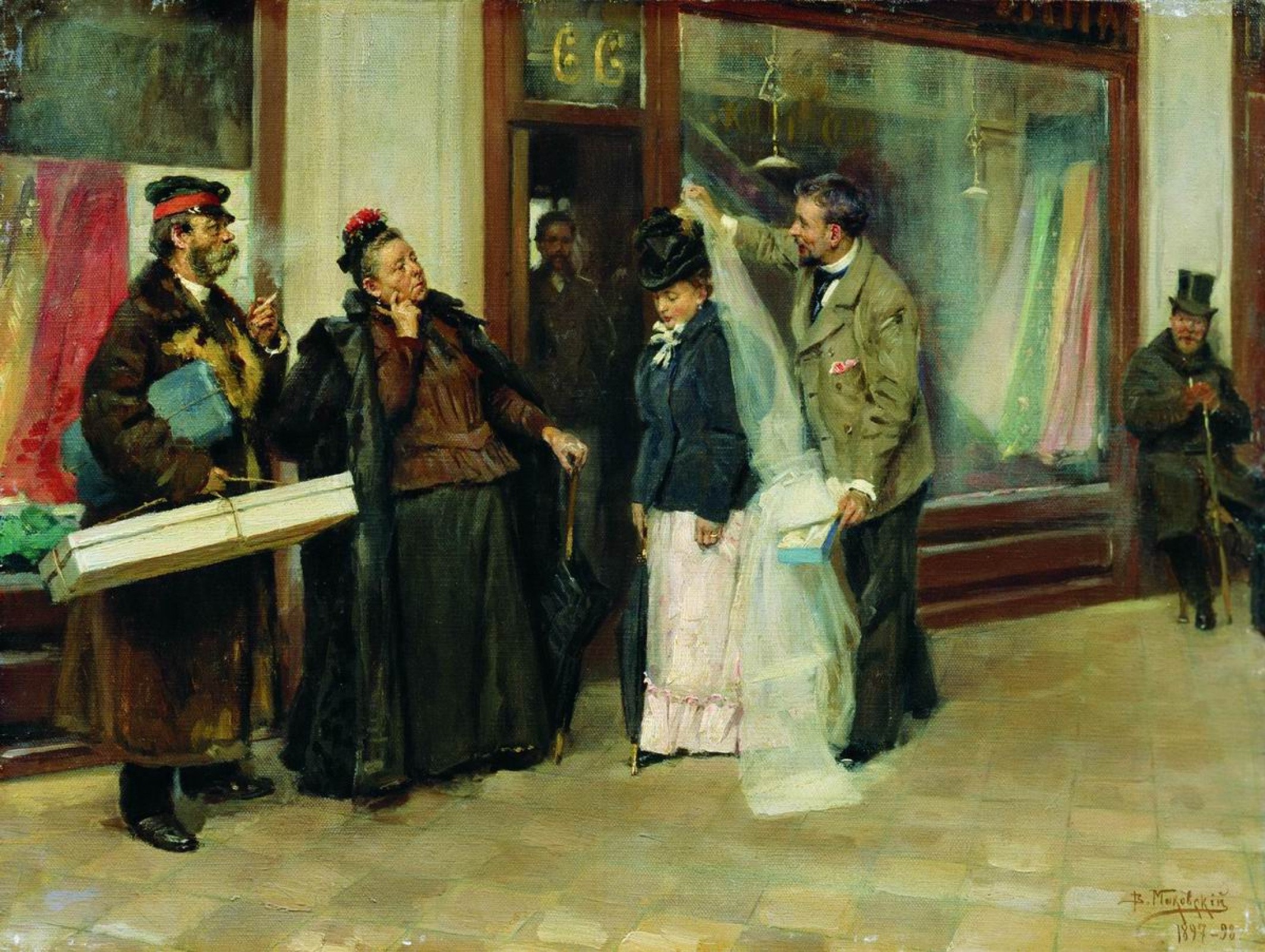
Muscovites of Moscow and Naum Granovsky
Naum Granovsky is a true Moscow historian of the 20th century. He was loved and continues to be loved for his incredibly respectful attitude towards Moscow. In 1926 he moved to the capital, where he found a job at TASS. Less than a year later the promising young man was hired as a photojournalist.
Granovsky tried to capture the ordinary life of Muscovites against the background of his native metropolitan architecture. From photo diaries you can see how quickly the image of the capital is changing. The photographer had a special talent for beautifully showing daily life in the city as it really was, regardless of time. Naum Granovsky tried to choose non-trivial angles, often shooting from high altitude points. Great attention was paid to the light: Arriving at the shooting location, Granovsky waited several hours for the light to fall correctly.
Granovsky probably had no idea how much the capital’s appearance would change in the coming decades and how quickly it would happen. When he began shooting professionally, the formation of the Russian avant-garde began, a unique and unique style that reflected the era.
Architects trying to design the buildings of the future have created incredible models. The appearance of the capital began to transform and acquire new unusual buildings that are not found anywhere else in the world except Moscow.

There were attempts to create constructivist images in the 30s, but the Soviet government quickly stopped any experiments. These aspirations were inspired primarily by a passion for constructivism. But during the Stalin era (from the mid-1930s to the 1950s) everyone forgot about this direction, and Soviet classicism, combining Empire, Art Deco and eclecticism, came into fashion. In the early 50s, Moscow began to be actively built with panel houses, the main features of which were functionality and simplicity. By the 90s, all residential areas of Moscow were built with panels.
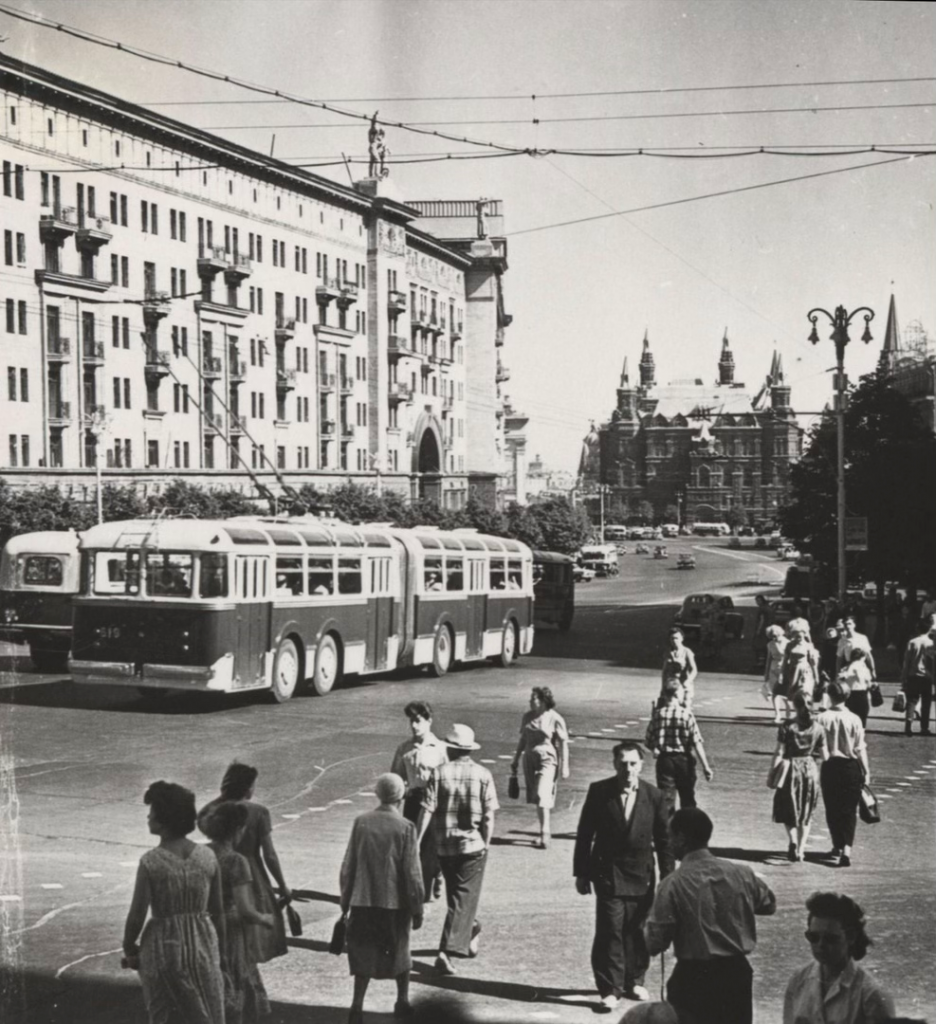
Radical changes in the capital affected not only architecture but also fashion. “Russian Coco Chanel” Nadezhda Lamanova created a real sensation. It was he who stood at the origins of domestic fashion and proletarian clothing style. He designed clothes for the general population and also dressed celebrities and even the emperor himself.
In the 60s and 70s, residents of the capital began to wear miniskirts and bell bottoms. The first knitted tracksuits appeared. Muscovites became more relaxed; This is reflected not only in their clothes but also in their lifestyle. There was also a terrible shortage of fabric: many things were changed on their own or changed to order. By the 1980s, there was a clear trend towards self-expression through appearance, despite severe restrictions and prohibitions.
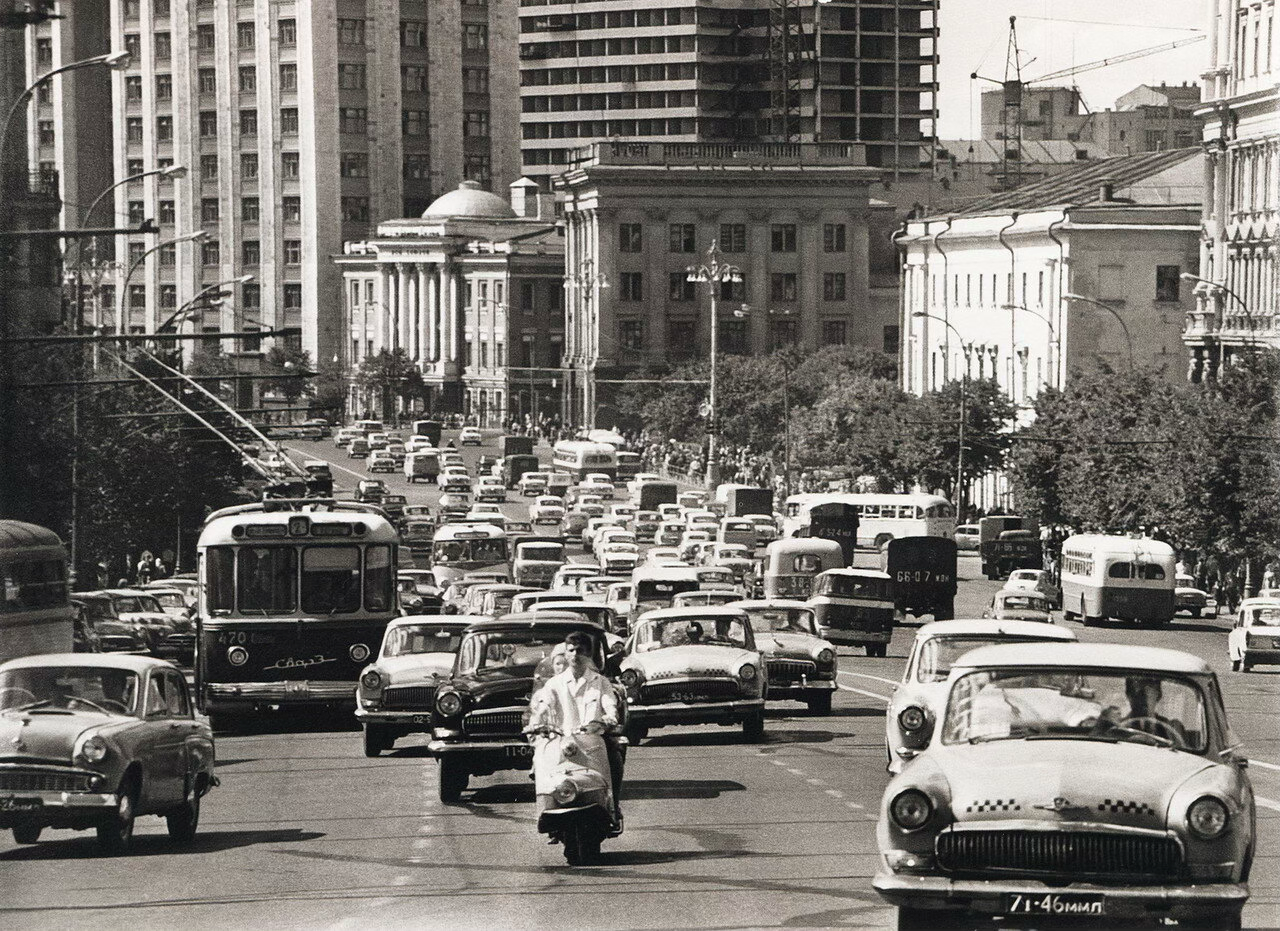
Moscow Sergei Shakhidzhanyan
Moscow in the 21st century has two eras: “Luzhkov’s Moscow” and “Sobyanin’s Moscow”. The two periods are completely different: from the architectural component to the appearance of the capital’s inhabitants. When Yuri Luzhkov became mayor (1992–2010), Moscow became one of the most prominent Russian capitals. In almost twenty years, the city has changed beyond recognition, both externally and in terms of its rhythm of life. It has transformed from a gray post-Soviet community into a dynamic metropolis with a thriving infrastructure, cultural life, and business and entertainment opportunities.
After the collapse of the USSR, Moscow was in a state of disrepair: collapsed buildings, lack of basic infrastructure, gray facades and irregular transport. Under Luzhkov, a large-scale reconstruction of the city began: historical buildings and churches were restored, lost architectural monuments, including the Cathedral of Christ the Savior, were restored. Roads were actively built, the transport network, including the metro, was expanded. New residential complexes, business centers, shopping malls and embankments appeared. Landscaping work began: trees were planted, parks and squares were created, fountains were created.

We asked TASS photo records manager Sergei Shakhidzhanyan to share interesting photos of the former capital. “Moscow Luzhkovskaya” has many distinctive features. The architectural style of that period has a clear tendency towards the “Stalinist Empire style”. They tried to decorate city buildings with towers, imitation columns and “fake marble”, which sometimes fell into the “kitsch” category. But after difficult decades, new objects seemed like a wonderful thing.
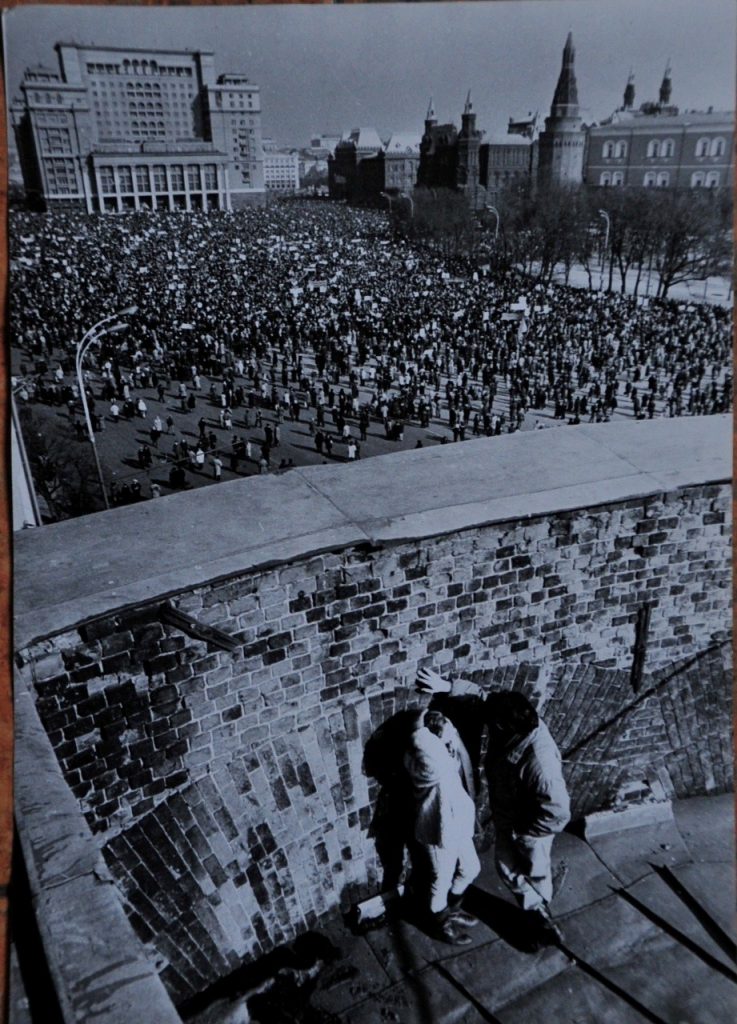
Under the management of Yuri Luzhkov, the Okhotny Ryad shopping center appeared. Previously, Manezhnaya Square was a highway; However, it became a pedestrian zone in 1993. Later, construction of an underground shopping complex with a glass dome on top began. It is decorated with luxurious fountains designed by Zurab Tsereteli.
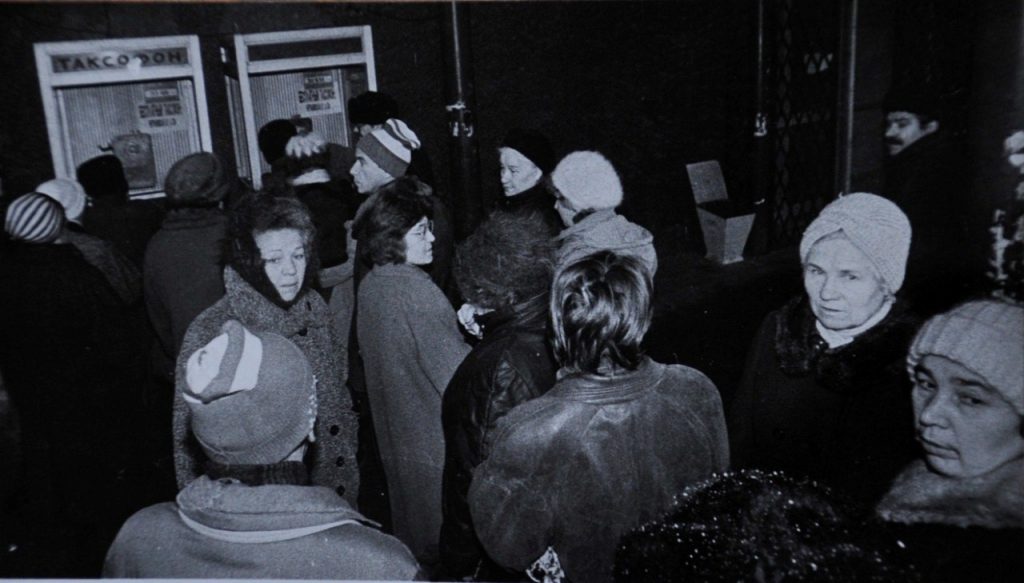
During the same period, urban infrastructure actively developed. You could see pay phones installed everywhere on the streets; this was a symbol of the era before the advent of mobile communications. They became a familiar element of the cityscape: Muscovites called friends, made appointments and even resolved important business issues in transparent booths.
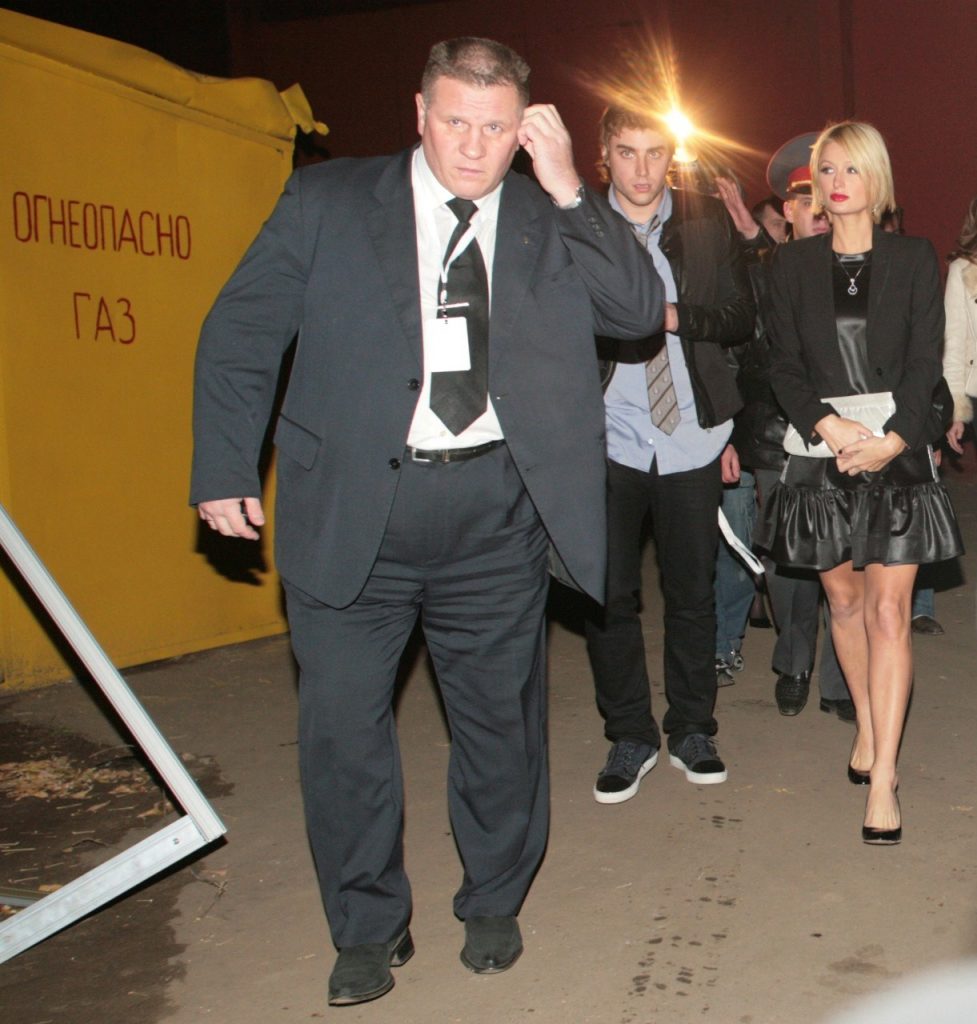
Moscow has become a place where you want to live, walk and develop. One of Luzhkov’s priorities was the creation of modern infrastructure for leisure and entertainment. New theatres, cinemas, museums and exhibition halls were opened. Fairs, festivals, and major city celebrations emerged. City Day, for example, turned into a large-scale event with a concert and fireworks on Red Square.
In the 2000s, Moscow began to actively attract the attention of world culture and show business. Foreign stars, which had previously seemed almost impossible, began to come to the capital. Paris Hilton and many other world celebrities attracted attention at fashion parties and club openings. This was a strong signal that Moscow was becoming a global city, part of the world cultural scene.
Luzhkov also supported small and medium-sized businesses, including farmers, artisans, and shop and market owners. Both traditional and modern Moscow markets began to develop, where Muscovites could buy farm products and rare goods. New jobs emerged, stimulating the domestic economy and providing employment.
This added greater freedom and opportunity to the lives of Muscovites and contributed to the diversity of the urban environment; cafes and shops began to appear literally at every turn.
Source: People Talk
Errol Villanueva is an author and lifestyle journalist who writes for The Fashion Vibes. With a passion for exploring the latest trends in fashion, food, travel, and wellness, Errol’s articles are a must-read for anyone interested in living a stylish and fulfilling life.
